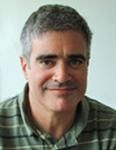Cited By
View all- Novo LBermejo-Vega JGarcía-Patrón R(2021)Quantum advantage from energy measurements of many-body quantum systemsQuantum10.22331/q-2021-06-02-4655(465)Online publication date: 2-Jun-2021
- Hangleiter DBermejo-Vega JSchwarz MEisert J(2018)Anticoncentration theorems for schemes showing a quantum speedupQuantum10.22331/q-2018-05-22-652(65)Online publication date: 22-May-2018
- Drucker A(2011)Efficient probabilistically checkable debatesProceedings of the 14th international workshop and 15th international conference on Approximation, randomization, and combinatorial optimization: algorithms and techniques10.5555/2033252.2033298(519-529)Online publication date: 17-Aug-2011
- Show More Cited By


